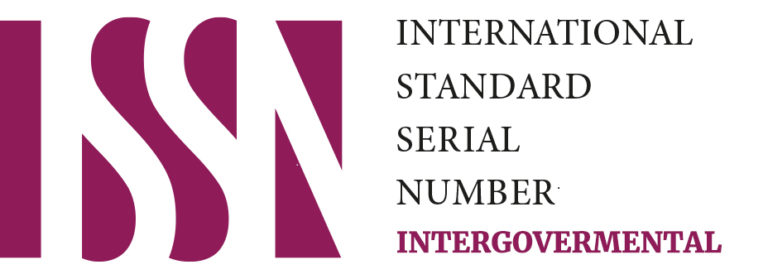ABSTRACT
This article shows that artificial intelligence (AI), and machine learning (ML) provide useful tools for responding to the effects of climate change. The United Nations is making use of these technologies in a variety of ways. Matters discussed in the article show how these technologies can be used to develop programs to respond to specific climate problems. The article also sets out that these technologies should be regulated by human actors to ensure they do not cause negative impacts to the safety of people or other life on the planet. This will require transparency of the designs and algorithms employed for artificial intelligence and machine learning employed to respond to the climate effects being targeted. Also, the directives must provide methods for AI and ML determinations to be challenged.
The research for this article adds to the understanding of how artificial intelligence and machine leaning can be used to respond to the effects of climate change and provides reasons that humans should maintain control of these technological advances to ensure mistakes do not occur that will harm people and the environment.
- Introduction
This article provides examples of projects using artificial intelligence relating to climate change that have been initiated by the United Nations. It then moves on to address areas where artificial intelligence is being employed to deal with C02 capture and respond to extreme weather events. These areas, wildfires, flooding, and carbon capture and sequestration, show what artificial intelligence and machine learning can respond to the climate crisis. Other extreme weather events such as droughts, heatwaves and the impact on biodiversity are not reviewed in the article, although they may also be areas where these technologies can provide methods to assist with climate change adaptation.
Examples of artificial intelligence and machine learning set out in the article show how control can be maintained for use of the technologies. First, they need to be evaluated and shown to be fit for the purposes for which they are being used. Second, people using the technologies require technical skills to apply them to the problems being addressed.
Given rapid advances being made for both artificial intelligence and machine learning, it is proposed that laws and regulations be developed as soon as possible to ensure the technologies will be used safely for all people. Research shows steps are being taken to address these matters by universities and agencies such as the European Union, and the World Economic Forum. These laws and regulations can provide guard rails to ensure that artificial intelligence and machine learning not only meet the purposes for which they are to be applied, but that they are acceptable tools for societies around the world. With these assurances, people can move forward to develop programs to manage the effects of climate change.
Examples of Initiatives of the United Nations
Ways artificial intelligence and machine learning can be used to address climate change are shown by five examples of work by the United Nations and its agencies. For example, the United Nations Framework Convention on Climate Change (UNFCC), and the United Nations Environment Program (UNEP), on their own and, in collaboration with others, not only alert people to problems which are being experienced in the environment, but allow UN countries, people involved in environmental agencies, and those taking steps to manage environmental issues, to take action to respond to climate change impacts.[i] It is shown the UN agencies do not work alone, but in collaboration with governments, companies and others involved in areas being addressed.
1.1 Pollution
The first of the five examples from the UN Environmental Program, 2022 covered in this article, is that of pollution. [1]It shows how the UN is dealing with air quality measurement and shows the air quality activities being implemented. (UN environmental program, 2022) For example, air quality databanks obtain and collate information from readings provided by governments, satellite monitors and crowd sourced material. Data about levels of air pollution around the globe are provided using the tools of artificial intelligence.(UN environmental program, 2022)
The UNEP has collaborated with agencies that use artificial intelligence to produce air quality monitors for countries to show exposure to different types of air pollution. The importance of air quality is shown by these research results, in words, as well as using photography and the graphic arts. These methods of communication allow the UN organizations to convey their messages with strength.
1.2 Freshwater Pollution
The second example is freshwater pollution. Here, UN Environmental Protection, with Google’s cloud computing and artificial intelligence, and the European Commission’s Research Center, have created a web-based platform which can measure humanities environmental footprint on global freshwater systems. This platform also addresses Sustainable Development goal 6.6, to protect and restore freshwater ecosystems. (SDG Indicator, 6.6.1) Again, messages are conveyed not only by words but using photography and graphic art.
1.3 Methane Releases
The third example deals with monitoring and handling methane releases, a major contributor to climate change. (UNEP, 2021) Methods, using machine learning and satellite imaging, are being developed to monitor and to reduce methane emissions. [2]
These methods use satellite images, and photographs to show events that cause methane emissions. They bring the reality of the situation to the reader and those following climate change occurrences around the world.
Technological tools are available to deal with the problems shown by satellite images and photographs. There are environmental technologies for lowering carbon, and methane emissions, that are being employed by the Climate Technology Center and Network (CTCN), a technology mechanism of the UNFCCC, operated by UNEP in collaboration with United Nations Industrial Organization (UNIDO). UNIDO is mandated to provide sustainable industrial and economic development both in developing and developed countries. This includes fostering digital and green transitions to achieve food security in support of sustainable development goals. The CTCN recognizes the importance of artificial intelligence in its program. Its stated purpose is to build a sustainable planet in a digital age. The project involves many stakeholders, including youth, companies, and organizations across the globe. (UNEP, and CTCN, 2022)
The CTCN and UNIDO work includes technologies related to lowering carbon emissions, building capacity, and supplying advice to countries for the development of policy, legal and regulatory frameworks. The CTCN works with technology companies and institutions for the development of environmental technologies that address CO2 and methane emissions. The CTCN and UNIDO use visual imagery to communicate their messages. One project which shows the benefit of the use of artificial intelligence to supply methane release information is a study of methane emissions from dairy production. [3]
1.4 Rivers and Ocean Pollution
Fighting plastic pollution in rivers and oceans is a fourth area where the UN is working to combat the effects of environmental degradation. In an April 2021 press release, it was announced that the UNEP and Google were partnering to look for plastic pollution using machine learning. (UNEP and Google, 2021) UNEP is also collaborating with the Walker Center, IBM Data Science and EI Elite to address marine litter by creating methods using AI to address litter in the ocean (UNEP, 2020)
One innovative AI method being employed is the introduction of Sam, a virtual robot, said to be the first virtual environmental advocate. Sam provides information about the goals of collecting global information about marine litter, and outlines objectives for creating methods to clean up plastic pollution. These methods use artificial intelligence to engage their audience. The virtual environmental advocate, Sam, sets out the desire is to have people around the world become emotionally involved in dealing with marine litter. By making Sam a realistic virtual personality, this goal has a good chance of success.
Also showing how the UN is addressing marine plastic litter, is a blog post by Els Knaeps, Artificial Intelligence to Detect Marine Plastic Litter 08706/(2022).[4] Knaeps’ blog information refers to the UN resolution adopted by the 5th UN Environmental Assembly resolving to end plastic pollution and enter an international agreement for this purpose by 2024. The research includes field samples and models, as well as remote sensing through satellites, drones, and fixed cameras. These methods add precision to the work being undertaken. They provide the ability to follow regulations that have been put in place to meet associated SDG objectives relating to marine plastic litter.
Another article, Targeting Plastics: Machine Learning Applied to Litter Detection in Aerial Multispectral Images, illustrates the precision of the AI tools, and provides a vision of what AI may be able to accomplish for the oceans. For example, the High-Level briefing which took place before the UN Ocean Conference in Lisbon in July 2022 provided a glimpse of what can be done. At this conference, world leaders pledged to take greater action to save the world’s oceans. They pledged to protect the oceans from existing and future pollution threats. The problem of plastic pollution was recognized as a major source of degradation of the oceans and the living things in the oceans. (UN Conference Plenary, 2022) In preparation for the 2022 Oceans Conference, meetings were held to address critical issues for building a healthy ocean in support of SDG 14. This included work in scientific observation and data collection to inform decision-making and planning relating to finance, technology transfer and capacity-building. Those attending the conference also discussed the ways scientific advances, including artificial intelligence, could be used in this area. (UN Ocean Conference, 2022) [5]The discussions included the work of scientific observation and data collection that can inform decision-making and planning relating to finance, technology transfer and capacity building.
In the spring of 2024, Barcelona, Spain will be the venue for UNESCO’s Intergovernmental Oceanographic Commission (IOC/UNESCO), Ocean Conference. The conference will revisit and report on the development of matters for ocean care. It will be of interest to learn how the issue of deep-sea mining will be dealt with given the pledges of ocean care given at the 2022 Lisbon Ocean Care . This is a controversial topic as shown by academic writing about the area.[6] The effect of deep-sea mining on biodiversity of marine species is only one of the items being explored.
1.5 Digital Art and the Climate
The fifth example is Digital Art4Climate, an artificial intelligence and art project. The United Nations announced 2021 as the year of Creative Economy for Sustainable Development. It recognized the creativity was a valuable resource to achieve sustainable development and climate action. This led to the creation of Digital Art4Climate, a multi-stakeholder partnership to promote climate action. Using blockchain technology, the activity turns art into digital assets (known as NFT’s Non-Fungible Tokens) that can be collected and traded.
This creates an innovative way for creating art. (Digital Art4Climate, 2021) It provides a new forum for art collection and sale. The group, Habitat for Art, associated with the UN and other groups have worked together to create a platform for this resource. Art generated from the activity was displayed at COP26. (DigitalArt4Climate) As well, at COP27, Digital Innovation, Art4Climate and other co-hosts, set up a pavilion to engage participants in the new digital art for climate action. (Digital Innovation and Digital Art4Climate Pavilion)
This combination of art and artificial intelligence gives rise to a new form of art gallery, art collection, and sales method that promotes climate action. Bringing these areas under one umbrella is written about in the article, “How artificial intelligence is helping tackle environmental challenges (Modern Diplomacy, Green Planet, 2022) 5.5. It is shown that Artificial Intelligence provides the measurement tools required to effectively address the climate crisis. It also supplies methods to manage the problem from different perspectives and considers the problem of pollution from land, water, and air. It also supplies ways of sharing information, such as virtual reality, that allow people to experience the problems raised and provide incentives for them to take responsibility for the pollution problem and to change their habits.
The Modern Diplomacy article shows the digital art project curates, aggregates, and visualizes earth observation both in real time and future predictions. This combination of art, artificial design, the UN agencies, and their partners, supplies an opportunity to transform climate challenges by introducing climate solutions. These methods are being employed to encourage climate action, and to promote the goals of the United Nations Framework Convention for Climate Change, the Paris Agreement, and Sustainable Development Goals.
The United Nations digital art and climate project fits neatly into the topic explored in my book, Creating a Masterpiece, the Arts and Climate Change Conflict. [7] The book adopts the Talanoa Dialogue Platform to tell the story of how art projects can be employed to promote the objectives of the United Nations Convention on Climate Change and Paris Agreement. As indicated by the United Nations in its announcement of 2021 being the year of creative economy and sustainable development, the importance of creativity to climate action is a valuable resource.
These examples show that messages communicated by the UN and its agencies, in collaboration with other actors, using artificial intelligence, move beyond words to raise awareness, and develop new methods of addressing climate change. Artificial Intelligence and Machine learning brings a new perspective to the Talanoa dialogue that will shape the future. This will allow the governments of UN countries, people involved in environmental agencies, and those interested in environmental issues, to move forward with ways to foster climate action and adapt to the world that climate change is bringing.
Part 2: Using AI to Combat Wildfires
2.1 The Cost of Wildfires
Material published by the World Economic Forum indicates that the World Meteorological Organization has predicted an increase in fires on a global scale of up to 30% by 2050. With this increase, in addition to traditional firefighting methods, innovative technologies are sought to address environmental problems. A consolidation that involves government, business and civil society, the World Economic Forum works to address issues such as wildfires. (www.weforum.org)
In addition to the economic cost of dealing with wildfires, this extreme weather event is undermining attempts to reduce carbon dioxide emissions. Information published by the World Economic Forum indicates,
[t]the average annual cost of wildfires is around $50 billion, while in 2021, global wildfires released an estimated 6, 450 megatonnes of CO2 into the atmosphere. (World Economic Forum, July 2023)
It is predicted this situation will continue efforts are being made to employ artificial intelligence and machine learning to respond to this crisis. This includes predicting and directing responses to wildfires and managing forests following a report, Global Risks Report, 2023. Commenting on this report, Jeremy Jurgens, Managing Director of the World Economic Forum, said:
[d]uring this difficult period of growing fire seasons and climate change, we are committed to continuing and strengthening this global engagement. We hope this report will inspire you to join in these efforts, which can address the key drivers of catastrophic fires, to increase the pace and scale of forest management and improve the resilience of increasingly threatened communities globally. ( World Economic Forum, July 2023)
2.2 Predicting and Combatting Wildfires.
Artificial Intelligence and machine learning are being used to prepare risk assessment models relating to the extreme weather events of wildfire linked to the changing climate.
Research shows the World Economic Forum is engaged in developments to manage and respond to wildfires. This includes attempts to create computer vision AI to produce autonomous vehicles that can be used in wildfire prediction. It also includes data collection to support forest management by using sensors to collect acoustic information or to operate as smoke detectors to alert authorities when a wildfire commences, and unmanned ariel vehicles (UAV’s) to provide images to firefighters to help them respond to the wildfires. World Economic Forum, 16 January 2023, [8]
2.3 Robotics and AI to fight wildfire.
The new frontier for firefights is to use robots and drones to help firefighters in handling wildfires. The World Economic Forum’s FireAid project was used with partners to help with the wildfires in Turkey in 2023. World Economic Forum,
The project, AI for Good, organized by the International Telecommunications Union (ITU ) in partnership with 40 UN Sister Agencies holds annual summits in Geneva and works on programs to meet Sustainable Development Goals including addressing climate change impacts such as wildfires.
Each of these initiatives shows the value of artificial intelligence and machine learning in developing effective responses to the devastating problem of wildfires. Each of these developments, again depends on ensuring that AI and Machine learning is used according to laws and regulations that relate to the activity that is being addressed. Information about about how UK Universities have agreed to focus on the topic of Artificial intelligence is a welcome step to ensure this will move forward.
Part 3: Carbon Capture and Sequestration
Another topic for which artificial intelligence and machine learning play a role is that of carbon capture and sequestration. To meet the goals of the Paris Agreement to limit C02 levels, governments and companies have suggested that carbon capture and sequestration should be employed. Research shows that artificial intelligence (AI) can be of help in developing methods of carbon capture and sequestration.
It has been recognized, however, that to ensure the safety and efficiency of this machine learning, there is a need to develop a legal structure for the use of AI. This requires laws and regulations for those developing and implementing carbon capture methods that use machine learning tools for carbon capture. (Carbon Capture Webinar, AI Technology of Carbon Capture and Storage to Achieve, Global Net Xero Carbon Emissions, 2023)[9]
Articles support the call for legislation to be developed, as well as the development of procedures which support accountability to the AI user, and the right to challenge the results of the AI system. These legal procedures should involve transparency as to how carbon capture and sequestration methods are designed, so that technological errors and potential injustices can be avoided. (Crocker, John, the Law that Shapes Us: Law Artificial Intelligence and Human Rights, Connecting the Dots, 30/03/2023). Crocker’s article supports the need for guard rails of laws and regulations to ensure there is accountability by artificial intelligence designers working in climate change. His article shows how failure to provide this structure can lead to negative results for people and the environment.
3.1 Problems to Be Addressed for Carbon Capture and Sequestration
Issues about machine learning may arise because the average person may not have the skills to understand the programs for carbon capture and sequestration. This requires governments and companies using these systems to supply information about the development of the systems, and that there are safeguards in place to avoid technological errors. In the case of carbon capture, handing the capture, and the security of sequestration are paramount. It is important to ensure the safety of the programs for people and for the environment. Coding errors, bugs, and defects, such as those found in the UK Post Office’s use of an AI system that had such problems, must be avoided. [10]
It must be remembered that artificial intelligence and machine learning are human creations and the laws and regulations required to keep them in check are also human creations. The power of AI sometimes causes us to forget this, but, as AI developers have recognized there needs to be time provided to learn now to work effectively with the recent technologies.
Systems must be designed to fit the purpose, lowering C02 emissions, and must be transparent by supplying information that allows the system to be inspected and trialed before use in delicate situations. There must be methods available for users of the AI systems to challenge decisions made by the AI program and legal appeals available to real people, not an AI system. In addition, should an AI system cause harm to people or the environment, there needs to be a system of compensation put in place for reparation of the harm. A report of the UK parliament confirms the need for development of laws and regulations to meet the quickly developing AI technology. [11]
3.2 Carbon Capture and Sequestration Development
Articles in 2023 show that carbon capture and sequestration projects are being developed at breakneck speed. The importance of ensuring these systems work effectively to meet the goal of reducing CO2 in the atmosphere, and safely stored when captured, requires exacting standards. This is recognized by the European Commission which has developed legal directives for this purpose. [12] The directives include reporting requirements to ensure they are up to date with current technological advances. The directives show that safety plays a vital role in the geological storage of the C02.
In developing the framework and details of the directives for carbon capture and sequestration, it is important to canvas both positive and negative aspects. The positive aspects are the ability to use these systems to help people respond to the climate crisis with systems that provide alerts or help people adapt to events that occur. Possible negative situations could result from leakage from the underground storage facilities that could contaminate air and water. Scientific aspects of the processes of machine learning for carbon capture, use, and storage, are being reviewed as technologies develop. [13](Royal Society of Geography)
Research shows that those involved with the development of artificial intelligence and machine learning are calling for structure and regulation. It is recognized that there are uncertainties and potential negative effects unless the development and use of AI are properly regulated. [14]
From these materials, it is shown that while carbon capture can have positive results to address climate change CO2 emissions, it can have catastrophic impacts should the methods of carbon capture and sequestration result in an increase of CO2 emissions or an escape of sequestered CO2 into water systems.
For a model to look at, legislation dealing with underground storage tanks illustrates the need for an extensive regulatory framework for development, monitoring, and potential cleanup. An example is provided by the laws and regulatory provisions of the United States Environmental Protection Agency.[15] The creation of laws and regulations for underground storage tanks provides an example of the vigilance needed to cover potential CO2 pollution from carbon capture and sequestration.
Furthermore, development of powerful AI tools to help in carbon capture and sequestration may create uncertainties that call for extra caution.(Khan, Jeremy, Wozniak among over 1.1000 sign open letter calling for 6 month ban on creating powerful A.I, Fortune.com, 29/0/2023)
3.3 Proposals
Although carbon capture and sequestration can play a positive part in meeting the Paris Agreement goals of reducing carbon emissions, laws and regulations should be developed. Dipute provisions need to be put in place with people in charge of making decisions, both on primary challenges and on appeals. Only with this can people be assured of security, and respect for human safety and safety for the environment. It is proposed that reviews both by governments who use carbon capture methods, technology companies developing artificial intelligence and machine learning, and the users of the systems all play a part in the legal structure developed.
Part 4: Flooding
Another extreme weather event for which artificial intelligence and machine learning is helping people to adapt is that of flooding. These technologies can be used to alert people to the problems likely to occur so that plans can be put in place to deal with the effects flooding will have on people and on the environment. It can also be used to help people and communities handle problems of flooding.
Examples of existing programs include Google’s AI and enabled Cloud program which supplies flood forecasting. This gives communities an opportunity to prepare for the situation. Showing how artificial intelligence helps people deal with flooding occurrences, the program, Flood Hub, allows information to be provided to communities in advance of a flood so that steps can be taken to prepare for the situation. Research shows there are currently eighty countries that are supplied information by Flood Hub. Research shows that machine learning is the preferred method for predicting floods. [16]
Based on information provided in this article, artificial intelligence and machine learning bring hope for adapting to extreme weather events resulting from a changing climate. While a positive step to addressing extreme weather events, caution must be exercised in the development of these technologies to ensure safety for human and planetary concerns are met.
Part 5: Conclusion.
This article has provided examples of how artificial intelligence is being used to address the effects of climate change. In reviewing the five artificial intelligence and machine learning activities the United Nations has been involved showed the broad scope of activities in which artificial intelligence and machine learning can make a positive contribution to climate change and its impact on the world.
The article has also shown how the tools of artificial intelligence and machine learning are being used for gathering information, modeling responses to climate issues and creating systems to respond to extreme weather and other climate change effects that are taking place.
While useful, it must be remembered these tools need to be employed for the benefit of people and the environment. The current uncertainties of dealing with these powerful tools,[17] shows we must take the time to develop the legal and regulatory systems that will protect people and the environment.
REFERENCES AND BIBLIOGRAPHY
Bucknail, Benjamin, Shirl Dori-Hael Hacohen Factor, , Current and Near-Term AI as a Potential Risk https://arxiv.org/abs/2209.10604 [2209.10604] Current and Near-Term AI as a Potential Existential Risk Factor (arxiv.org), Cornell University. 2022.
Carbon Capture Webinar, AI Technology of Carbon Capture and Storage to Achieve, Global, Net Xero Carbon Emissions. March 23, 2023.
Chat GPT, Pros and Cons for use for Climate Change, https://ts2.space/en/chat-gpt-4-and-the-environment-ais-role-in-climate-change-mitigation/
Cheong, So-Min, Kris Sankaran Hanen Rastane, artificial Intelligence for Climate Adaptation,
Cowls, J., Tsamados, A., Taddeo, M. et al. The AI gambit: leveraging artificial intelligence to combat climate change—opportunities, challenges, and recommendations. AI & Soc 38, 283–307 (2023). https://doi.org/10.1007/s00146-021-01294-.
Covet, T, Greenstone M, Sheils, C, Project 2019, University of Chicago, Machine Learning and Satellite Imaging to Reduce Methane Emissions, https://datascience.uchicago.edu/research/machine-learning-and-satellite-imaging-to-reduce-methane-emissions/.
Crocker, John, The Law That Shapes Us: “Law, Artificial Intelligence and Human Rights; Connecting the Dots https://www.law.ox.ac.uk/content/article/law-shapes-us-law-artificial-intelligence-and-human-rights-connecting-dots, 30/03/2023.
Ekin, Annette, https://ec.europa.eu/research-and-innovation/en/horizon-magazine/ai-can-help-us-fight-climate-change-it-has-energy-problem-too, accessed July 29, 2023.
Epps, Mina, https://www.iucn.org/blog/202207/reflections-closing-2022-un-ocean-conference-lisbon-portugal (blog).
European Commission, Climate Action, Carbon Capture, Use and Storage, https://climate.ec.europa.eu/eu-action/carbon-capture-use-and-storage_en, accessed July 30,2023.
Ghali, Rafik, and Moulay A. Akhloufi. 2023. “Deep Learning Approaches for Wildland Fires Using Satellite Remote Sensing Data: Detection, Mapping, and Prediction” Fire 6, no. 5: 192. https://doi.org/10.3390/fire6050192.
Graydon, Charalee, Creating A Masterpiece: The Arts and Climate Change Conflict, Euclid University, 2020.
Horn, Alex, Guardian UK Technology Editor, 01/04/2023. and Khan, Wozniak among over 1,100 who sign open letter calling for 6 months ban on creating powerful A.I, Fortune.com. accessed on 29/03/2023.
Horne-Mueller, Ayurella, Google’s AI enabled Flood forecasting goes global, May 22, 2023, https://www.axios.com/2023/05/22/googles-ai-flood-forecast.
Home Affairs House of Lords, Justice and Committee, 1st Report of Session 2021-22, Technology..
Iordache, Marian-Daniel, Liesbeth De Keukelaere, Robrecht Moelans, Lisa Landuyt, Mehrdad Moshtaghi, Paolo Corradi, and Knaeps. 2022. “Targeting Plastics: Machine Learning Applied to Litter Detection in Aerial Multispectral Images” Remote Sensing 14, no. 22: 5820. https://doi.org/10.3390/rs14225820.
Jain, Harshita, Renu Dhupper1 , Anamika Shrivastava1 , Deepak Kumar and Maya Kumari, AI-enabled strategies for climate change adaptation: protecting communities, infrastructure, and businesses from the impacts of climate.
Jones, A., Kuehnert, J., Fraccaro, P. et al. AI for climate impacts: applications in flood risk. npj Clim Atmos Sci 6, 63 (2023). https://doi.org/10.1038/s41612-023-00388-1.
Kleiv, Rolf Arne, and Maria Thornhill. 2022. “Deep-Sea Mining—A Bibliometric Analysis of Research Focus, Publishing Structures, International and Inter-Institutional Cooperation” Minerals 12, no. 11: 1383. https://doi.org/10.3390/min12111383.
Khan, Jeremy, March 29, 2023, Fortune, Jeremy Wozniak among over 1,100 who sign open letter calling for 6 months ban on creating powerful A.com. 29/03/2023.
Knaeps, Els, Artificial Intelligence to Detect Marine Plastic Litter, 08706/(2022). Blog.
Leong, s, Fischer, M.L, Breunig,H, Marklein, A.R., Hopkins,F.M., Biraud, S.C.“Artificial Intelligence Approach for Estimating Dairy Methane Emissions,” Environ Sci Technol. 2022 Apr 19;56(8):4849-4858. doi: 10.1021/acs.est.1c08802. Epub 2022 Apr 1. PMID: 35363471.
Oliver Inderwildi and Markus Kraft (eds), Intelligent Decarbonization: Can Artificial Intelligence and Cyber-Physical Systems Help Achieve Climate Mitigation Targets? Lecture Nores on Energy, Springer, 2022.
Piyush Jain, Sean C.P. Coogan, Sriram.
O’ Callahan, Jonathan, European Commission, Horizon, Storing C02 Underground can curb carbon emissions, but is it safe? November 2018.
Piyush Jain, Sean C.P. Coogan, Sriram Ganapathi Subramanian, Mark Crowley, Steve Taylor, and Mike D. Flannigan. 2020. A review of machine learning applications in wildfire science and management. Environmental Reviews. 28(4): 478-505. https://doi.org/10.1139/er-2020-0019
Priya AK, Devarajan B, Alagumalai A, Song H. Artificial intelligence enabled carbon capture: A review. Sci Total Environ. 2023 Aug 15;886:163913. doi: 10.1016/j.scitotenv.2023.163913. Epub 2023 May 5. Royal Geographic PMID: 37150463.
Subramanian, Mark Crowley, Steve Taylor, and Mike D. Flannigan. 2020. A review of machine learning applications in wildfire science and management. Environmental Reviews. 28(4): 478-505. https://doi.org/10.1139/er-2020-0019.
Royal Society of Geography, https://pubs.rsc.org/en/content/articlehtml/2021/ee/d1ee02395k.
The Royal Society locked away – Geological carbon storage policy briefing Issued: September 2022 DES7897 ISBN: 978-1-78252-616-2.
The University of Chicago, Data Science Institute, https://datascience.uchicago.edu/news/meet-the-autumn-2019-cdac-discovery-grant-projects/.
United States, Environmental Protection Agency, https://www.epa.gov/ust/underground-storage-tanks-usts-laws-and-regulations.
United States, Environmental Protection Agency., https://www.epa.gov/climate-change,.
United Nations Environmental Program, 2022.Website article, https://www.unep.org/news-and-stories/story/how-artificial-intelligence-helping-tackle-environmental-challenges.
United Nations, Spider.org, https://www.un-spider.org/links-and-resources/data-sources/daotm-floods-ml.
Wang, Fang, et al. “Technologies and perspectives for achieving carbon neutrality.” The Innovation 2.4 (2021).
Webinar, Carbon Capture and Storage, youtube.com/watch?v=1NJ2OsL_Aow.
AI Technology of Carbon Capture Webinar, Carbon Capture and Storage to Achieve, Global.
World Economic Forum, 16 January 2023, https://www.weforum.org/press/2023/01/successful-pilot-shows-how-artificial-intelligence-can-fight-wildfires/.
World Economic Forum Video: https://www.weforum.org,
Wu, Zechuan, Mingze Li, Bin Wang, Ying Quan, and Jianyang Liu. 2021. “Using Artificial Intelligence to Estimate the Probability of Forest Fires in Heilongjiang, Northeast China” Remote Sensing 13, no. 9: 1813. https://doi.org/10.3390/rs13091813.
[1] United Nations Environmental Program, 2022.Website article, https://www.unep.org/news-and-stories/story/how-artificial-intelligence-helping-tackle-environmental-challenges. (accessed on March 19, 2023)
[2] Covet, T, Greenstone M, Sheils, C, Project 2019, University of Chicago, Machine Learning and Satellite Imaging to Reduce Methane Emissions, https://datascience.uchicago.edu/research/machine-learning-and-satellite-imaging-to-reduce-methane-emissions/
[3]Leong, s, Fischer, M.L, Breunig,H, Marklein, A.R., Hopkins,F.M., Biraud, S.C.“Artificial Intelligence Approach for Estimating Dairy Methane Emissions,” Environ Sci Technol. 2022 Apr 19;56(8):4849-4858. doi: 10.1021/acs.est.1c08802. Epub 2022 Apr 1. PMID: 35363471.
[4] Knaeps, Els, Artificial Intelligence to Detect Marine Plastic Litter, 08706/(2022). Blog.
[5] Epps, Mina, ICUN, 2022, https://www.iucn.org/blog/202207/reflections-closing-2022-un-ocean-conference-lisbon-portugal (blog)
[6] Kleiv, Rolf Arne, and Maria Thornhill. 2022. “Deep-Sea Mining—A Bibliometric Analysis of Research Focus, Publishing Structures, International and Inter-Institutional Cooperation” Minerals 12, no. 11: 1383. https://doi.org/10.3390/min12111383
[7]Graydon, Charalee. 2021. Creating A Masterpiece: The Arts and Climate Change Conflict. Washington, Euclid University.
[8] World Economic Forum, 16 January 2023, https://www.weforum.org/press/2023/01/successful-pilot-shows-how-artificial-intelligence-can-fight-wildfires/. (accessed on March 10, 2023)
[9] Carbon Capture Webinar, AI Technology of Carbon Capture and Storage to Achieve, Global, Net Xero Carbon Emissions. March 23, 2023. (accessed on April 10, 2023)
[10] Crocker, John, The Law That Shapes Us: “Law, Artificial Intelligence and Human Rights; Connecting the Dots https://www.law.ox.ac.uk/content/article/law-shapes-us-law-artificial-intelligence-and-human-rights-connecting-dots, 30/03/2023.(accessed on April 10, 2023)
[11] Home Affairs, House of Lords, Justice and Committee, 1st report of Session 2021-2022, Technology, Chapter2, https://publications.parliament.uk/pa/ld5802/ldselect/ldjusthom/180/18005.htm#_idTextAnchor035. ( accessed on March 10, 2023)
[12] European Commission, Climate Action, Carbon Capture, Use and Storage, https://climate.ec.europa.eu/eu-action/carbon-capture-use-and-storage_en, (accessed July 30,2023
[13] Royal Society of Geography, Yan Yongliang et al, Harnessing the power of machine learning for carbon capture, utilization, and storage (CCUS) – a state-of-the-art review. Published online, 2021. DOI link: https://doi.org/10.1039/D1EE02395K, (accessed March 10, 2023)
[14] Horn, Alex, Guardian UK Technology Editor, 01/04/2023 and Bucknail, Benjamin and Shiri Dori Heal Hacohen Factor, Current and Near-Term AI as a Potential Risk Factor. (arxiv.org) (accessed on March 10, 2023)
[15] United States, Environmental Protection Agency, https://www.epa.gov/ust/underground-storage-tanks-usts-laws-and-regulations.(accessed on March 10, 2023)
[16] United Nations, Spider.org, https://www.un-spider.org/links-and-resources/data-sources/daotm-floods-ml. (accessed on July 30, 2023)
[17] Khan, Jeremy, March 29, 2023, Fortune, Jeremy Wozniak among over 1,100 who sign open letter calling for 6 months ban on creating powerful A.com. 29/03/2023.






